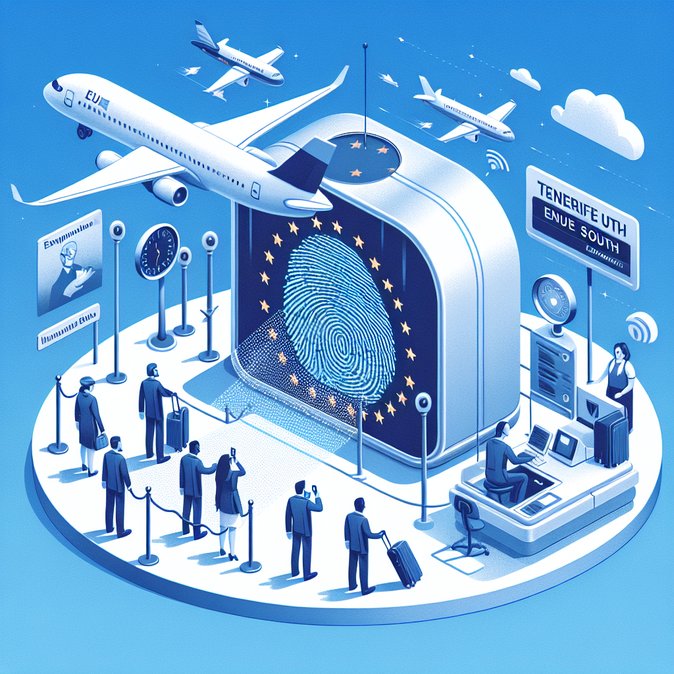
Spain has taken a decisive step toward fully digital borders: at 06:00 on 9 November the National Police switched on the European Union’s new Entry/Exit System (EES) for all non-EU travellers arriving at Tenerife South Airport (TFS). The airport is the first in Spain outside Madrid-Barajas to move from pilot testing to mandatory enrolment, making it an early test-bed for the six-month phased deployment the EU has mandated across Schengen external borders. Travellers arriving from the U.K., the U.S. and dozens of other third-countries now stop at self-service kiosks that capture a facial image and, for those aged 12 and over, all four fingerprints before they meet a border-police officer.
Officials say the change will cut fraud and automatically calculate how many days a visitor has left under the 90/180-day short-stay rule. Airlines, meanwhile, are bracing for a spike in processing times during the bedding-in period. Tour operators serving the Canaries have asked clients to arrive “at least three hours” ahead of departure while staff and passengers get used to the workflow.
![Tenerife South Airport Launches EU Entry/Exit Biometric System, Marking Spain’s First Full Roll-Out]()
For businesses, the roll-out matters because Tenerife South handles more than 11 million leisure and seasonal workers each year. The new biometrics should eventually reduce queue variability—critical for crew scheduling and tight connection windows to inter-island flights. But in the short term, corporate-travel managers are updating duty-of-care advice to reflect possible hold-ups and the need for staff to have passports with adequate remaining validity and no physical damage that could confuse scanners.
Border-technology suppliers are also watching closely. Spain’s Interior Ministry has earmarked €83 million for the national EES programme, and early performance metrics from Tenerife will influence procurement for remaining airports (Palma, Barcelona, Malaga and Alicante are slated next). Success here could position Spanish integrators strongly for roll-outs at land and sea crossings early next year.
Practical tip: companies should remind employees that the first EES registration takes about four minutes, but repeat entries use facial-match only and drop below 40 seconds. UK residents with Spain’s TIE residence card remain exempt and can continue to use EU/EEA lanes, avoiding the kiosks altogether.
Officials say the change will cut fraud and automatically calculate how many days a visitor has left under the 90/180-day short-stay rule. Airlines, meanwhile, are bracing for a spike in processing times during the bedding-in period. Tour operators serving the Canaries have asked clients to arrive “at least three hours” ahead of departure while staff and passengers get used to the workflow.

For businesses, the roll-out matters because Tenerife South handles more than 11 million leisure and seasonal workers each year. The new biometrics should eventually reduce queue variability—critical for crew scheduling and tight connection windows to inter-island flights. But in the short term, corporate-travel managers are updating duty-of-care advice to reflect possible hold-ups and the need for staff to have passports with adequate remaining validity and no physical damage that could confuse scanners.
Border-technology suppliers are also watching closely. Spain’s Interior Ministry has earmarked €83 million for the national EES programme, and early performance metrics from Tenerife will influence procurement for remaining airports (Palma, Barcelona, Malaga and Alicante are slated next). Success here could position Spanish integrators strongly for roll-outs at land and sea crossings early next year.
Practical tip: companies should remind employees that the first EES registration takes about four minutes, but repeat entries use facial-match only and drop below 40 seconds. UK residents with Spain’s TIE residence card remain exempt and can continue to use EU/EEA lanes, avoiding the kiosks altogether.







